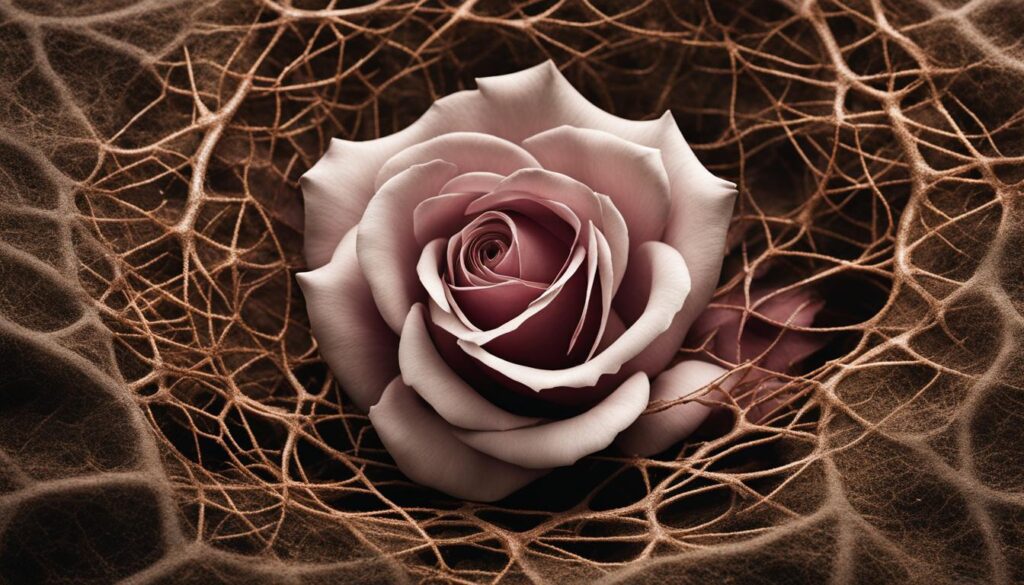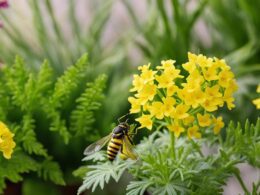In the captivating book “Anatomy of a Rose: Exploring the Secret Life of Flowers” by Sharman Apt Russell, you will embark on a fascinating journey deep into the inner life of flowers. As you delve into the pages, you will discover that flowers possess a world of hidden secrets waiting to be revealed. From their enchanting beauty to their intricate adaptations, flowers are much more than mere blooms. They hold a mesmerizing blend of science and wonder, offering insights into the remarkable intricacies of the botanical realm.
Within the pages of this book, the veil is lifted, and the science behind flowers is unveiled. You will explore the inner workings of these intelligent beings, gaining a deeper understanding of their evolutionary history, resilience, and healing properties. Sharman Apt Russell’s eloquent writing intertwines with scientific clarity, providing a captivating narrative that uncovers the mysteries that lie within the anatomy of a rose and all other flowers.
Prepare to be captivated by the inner life of flowers as you dive into the enchanting pages of “Anatomy of a Rose.” Explore the botanical secrets and delve into the intricate world that lies beneath their delicate petals. The beauty of flowers is not just skin-deep; it is a testament to the wonders of nature and the ever-unfolding miracles that await your discovery.
The Essential Role of Flowers in Ecosystems
Flowers play a crucial role in ecosystems, serving as a source of food and shelter for numerous animal and insect species. They have evolved intricate mechanisms to attract pollinators and ensure their reproduction.
One of the key reasons flowers are important in ecosystems is their ability to attract pollinators. Pollinators, such as bees, butterflies, and birds, are essential for the fertilization of flowering plants. As they visit flowers in search of nectar or pollen, they inadvertently transfer pollen between flowers, enabling the plants to produce seeds and fruits. Without pollinators, many plant species would be unable to reproduce, leading to a decline in biodiversity and ecosystem stability.
Additionally, flowers produce a wide array of chemical compounds that serve various purposes. Some of these compounds have medicinal properties and are used in traditional medicine to treat various ailments. Others have evolved to deter herbivores or attract specific pollinators. For example, certain flowers produce scents that are particularly attractive to bees or butterflies, increasing the chances of successful pollination.
The study of flowers has revealed the interconnectedness of nature and the vital role that flowering plants play in maintaining the balance of ecosystems. By providing food and habitat for a diverse range of organisms, flowers support the entire food web. They not only benefit pollinators but also provide a valuable food source for herbivores, which in turn are preyed upon by predators. This intricate web of relationships highlights the importance of conserving and protecting flowering plants and their habitats.
The Intelligence and Adaptability of Flowers
Flowers are not just pretty adornments in the natural world. They possess a remarkable intelligence and adaptability that allows them to survive and thrive in various ecosystems. Through their interactions with the environment, flowers have developed fascinating adaptations, intricate sensory mechanisms, and even communication methods, all aimed at ensuring their survival.
One of the ways flowers display their intelligence is through their ability to position themselves strategically to maximize sunlight exposure. By angling their petals or changing their orientation, flowers can optimize the amount of sunlight they receive, enabling them to undergo photosynthesis and produce energy efficiently.
Flowers also exhibit intelligence through their pollination strategies. They release pollen at specific times when their preferred pollinators are most active, increasing the chances of successful reproduction. This synchronization is crucial for the survival and continuation of their species.
Additionally, flowers engage in floral communication, using chemical signals to attract pollinators and repel competitors. They release fragrances and emit volatile compounds that act as attractants for specific animals, ensuring the transfer of pollen from one flower to another. Some flowers even mimic the scent and appearance of female insects to lure pollinators closer, enhancing the chances of successful pollination.
Furthermore, flowers have evolved survival strategies that showcase their adaptability. Some flowers can produce nectar that changes its chemical composition, becoming unappealing or toxic to unwanted visitors. By doing so, they successfully deter herbivorous insects or animals that might otherwise consume or damage them.
Flowers possess various sensory mechanisms that enable them to perceive and respond to their surroundings. They can detect changes in temperature, humidity, and light intensity, helping them make informed decisions regarding growth and reproduction. These sensory abilities are essential for their survival in diverse and ever-changing ecosystems.
In conclusion, the intelligence and adaptability of flowers are awe-inspiring. Their ability to position themselves for optimal sunlight exposure, release pollen at the right time, communicate through scent, and employ survival strategies for self-protection are all remarkable traits. Flowers demonstrate resilience, ingenuity, and a profound connection to the world around them. By appreciating and understanding the intelligence of flowers, we gain a deeper appreciation for nature’s ability to adapt and thrive.
Conclusion
“Anatomy of a Rose” takes you on a captivating journey into the inner workings of flowers, revealing their beauty, intelligence, and the wonders of nature. Sharman Apt Russell’s eloquent writing and scientific insights showcase the intricate details of the anatomy of a rose and other flowers, highlighting their adaptability and interactions with the natural world.
Through this enlightening book, you gain a deeper appreciation for the importance of understanding and preserving the diverse ecosystems that flowers inhabit. Each page serves as a reminder of the delicate balance of nature and the marvels that lie within the beauty of flowers.
From the secret life of flowers to their captivating fragrances and survival strategies, “Anatomy of a Rose” unravels the mysteries and showcases the wonder of nature. Whether you are a botany enthusiast or simply an admirer of flowers, this book offers a fascinating glimpse into the intelligence and resilience that exists within the flora kingdom.
What are the Botanical Secrets of the Fire and Ice Hibiscus Compared to a Rose?
The vibrant hibiscus garden blooms are known for their stunning diversity of colors, with the Fire and Ice Hibiscus standing out for its vibrant red and white petals. In comparison, the rose offers a more subtle range of hues. Both flowers boast unique botanical secrets, captivating garden enthusiasts worldwide.










